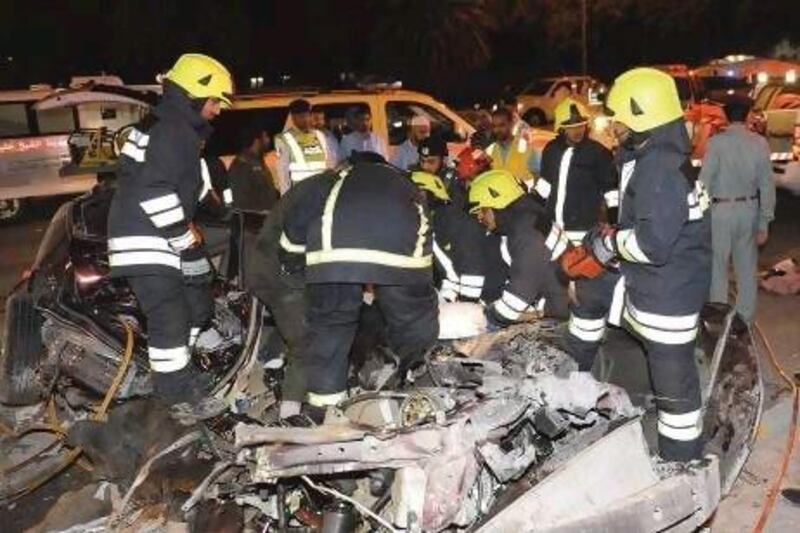ABU DHABI // Traffic accidents put an economic burden on the country estimated at 2.3 to 2.9 per cent of the country's GDP, experts said at a conference yesterday.
Road-safety specialists, economists and police met in the capital to debate the best way to measure the cost of human life.
The answer will influence laws, police enforcement and policy.
Information from the conference, sponsored by the Emirates Traffic Safety Society, will help the World Health Organisation (WHO) assess the economic burden of traffic injuries for the Eastern Mediterranean Region, which includes the UAE.
"As we move along, resources become more and more limited," said Dr Hala Sakr, the technical officer of WHO's regional programme to combat violence, injuries and disabilities. "There are lots of priorities competing for these resources, so decisions need to be made to make best use of them.
"Part of the burden of the problem is to see what the gains are, what the cost is, what the benefit is. Human life is important in the absolute sense but also important in the economic sense."
The economic burden of traffic deaths is subjective and each region needs a specific and clear model.
There are numerous ways to calculate the cost. One model is the human capital approach, which works with economic losses.
The UAE has no set model. But Dr Yasser Hawas, a professor at UAE University, and Nada Nasir, an engineer, applied a US model to UAE road deaths and severe injuries from 2005 to 2009 and included medical, legal and direct economic losses.
Calculations were made by using UAE statistics and comparisons with the costs in states with similar living expenses to the UAE, then cross-referenced with other studies to check for accuracy.
To calculate the total cost of one accident, different factors are taken into account. Market losses account for 26 per cent, losses to public property 25 per cent, medical expenses 14 per cent, emergency medical services 1 per cent, indirect losses due to traffic delays 11 per cent, household losses 9 per cent, insurance administration 7 per cent, legal losses 5 per cent and losses to employer 2 per cent.
In the UAE, the total cost for 2009 was Dh21.4 billion. Fatalities cost about Dh7.6 million and severe crashes with disabilities cost a total of Dh8.5m.
In Abu Dhabi, car accident deaths fell from 376 in 2010 to 334 last year - a drop of 11.1 per cent. In the UAE, deaths fell from 826 in 2010 to 720 last year, a drop of 12.8 per cent.
As severe injuries and road deaths have decreased, overall economic costs have dropped. But the average cost of a crash that leaves a person disabled could easily exceed millions.
"For one fatality, you would be surprised," said Dr Hawas.
The overall figure does not include the cost of moderate or minor injuries and crashes.
It is also possible that traffic-related injuries affect migration - the risk of road death means people leave the country or do not come at all.
"Everyone pays into it one way or another," said Dr Hawas. "Society as a whole pays these billions of dirhams for these losses."
The majority of deaths are young people, who are more economically productive than the elderly.
"In advanced countries, it is expected that we will see a decrease in the rate of deaths, but it is expected that there will be a potential increase in fatalities in our region," said Dr Sakr.
Data collection is a challenge in the region. One WHO initiative is to develop a unified data form.
The Ministry of Interior is working with other GCC nations to develop a set system of definition for traffic statistics, said Brig Gen Ghaith Al Zaabi.
"Despite the decrease in the number of fatalities in the last three years and an improvement in security, this improvement is not enough."






